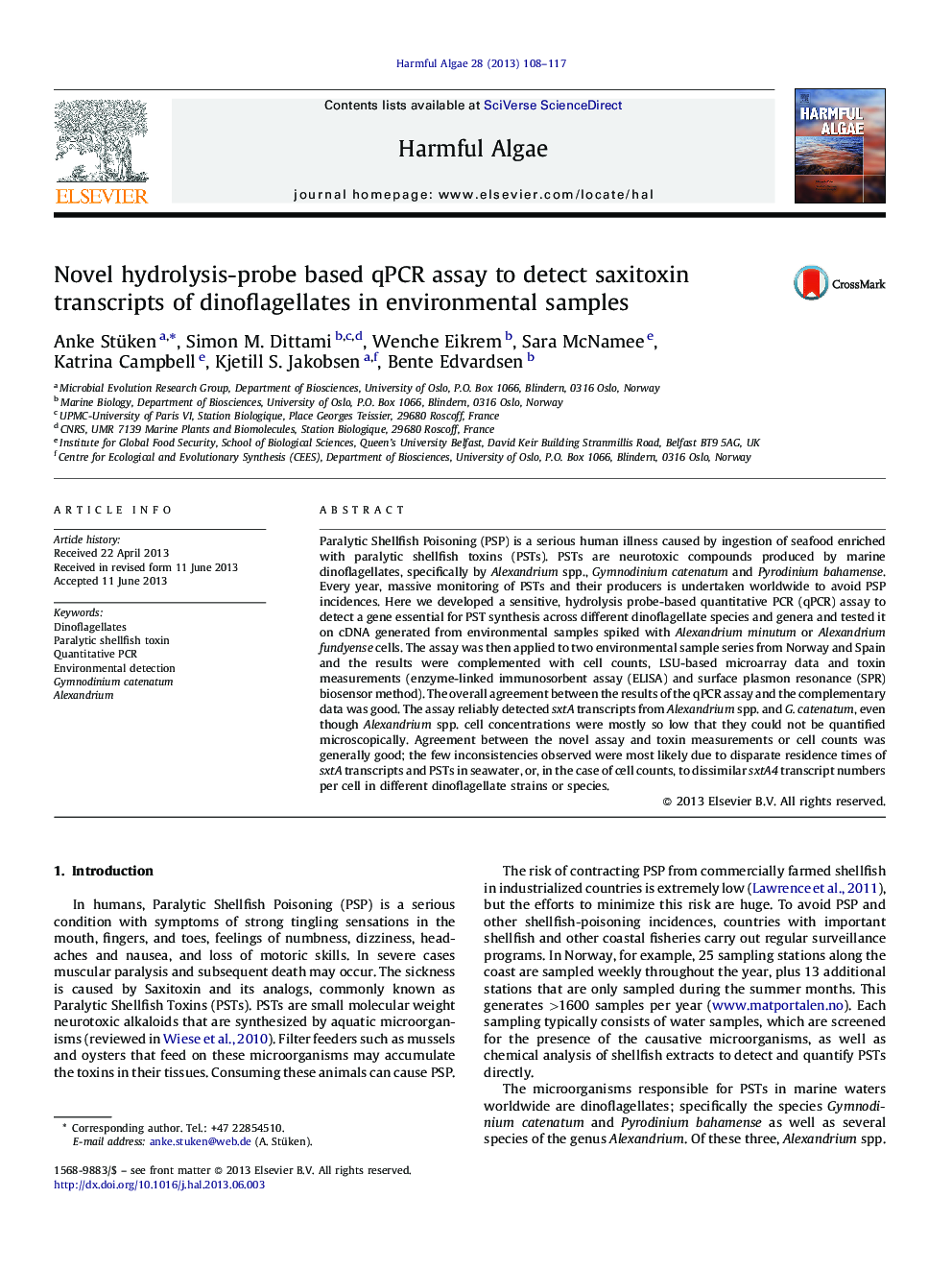| کد مقاله | کد نشریه | سال انتشار | مقاله انگلیسی | نسخه تمام متن |
|---|---|---|---|---|
| 4545455 | 1626943 | 2013 | 10 صفحه PDF | دانلود رایگان |

• Novel qPCR assay to detect mRNAs of sxtA, a gene essential for saxitoxin synthesis.
• Analysis of environmental sample series containing different saxitoxin producers.
• Good correlations between qPCR, cell counts, toxin measurements and microarray data.
• The assay is highly specific and sufficiently sensitive for routine monitoring.
Paralytic Shellfish Poisoning (PSP) is a serious human illness caused by ingestion of seafood enriched with paralytic shellfish toxins (PSTs). PSTs are neurotoxic compounds produced by marine dinoflagellates, specifically by Alexandrium spp., Gymnodinium catenatum and Pyrodinium bahamense. Every year, massive monitoring of PSTs and their producers is undertaken worldwide to avoid PSP incidences. Here we developed a sensitive, hydrolysis probe-based quantitative PCR (qPCR) assay to detect a gene essential for PST synthesis across different dinoflagellate species and genera and tested it on cDNA generated from environmental samples spiked with Alexandrium minutum or Alexandrium fundyense cells. The assay was then applied to two environmental sample series from Norway and Spain and the results were complemented with cell counts, LSU-based microarray data and toxin measurements (enzyme-linked immunosorbent assay (ELISA) and surface plasmon resonance (SPR) biosensor method). The overall agreement between the results of the qPCR assay and the complementary data was good. The assay reliably detected sxtA transcripts from Alexandrium spp. and G. catenatum, even though Alexandrium spp. cell concentrations were mostly so low that they could not be quantified microscopically. Agreement between the novel assay and toxin measurements or cell counts was generally good; the few inconsistencies observed were most likely due to disparate residence times of sxtA transcripts and PSTs in seawater, or, in the case of cell counts, to dissimilar sxtA4 transcript numbers per cell in different dinoflagellate strains or species.
Journal: Harmful Algae - Volume 28, August 2013, Pages 108–117